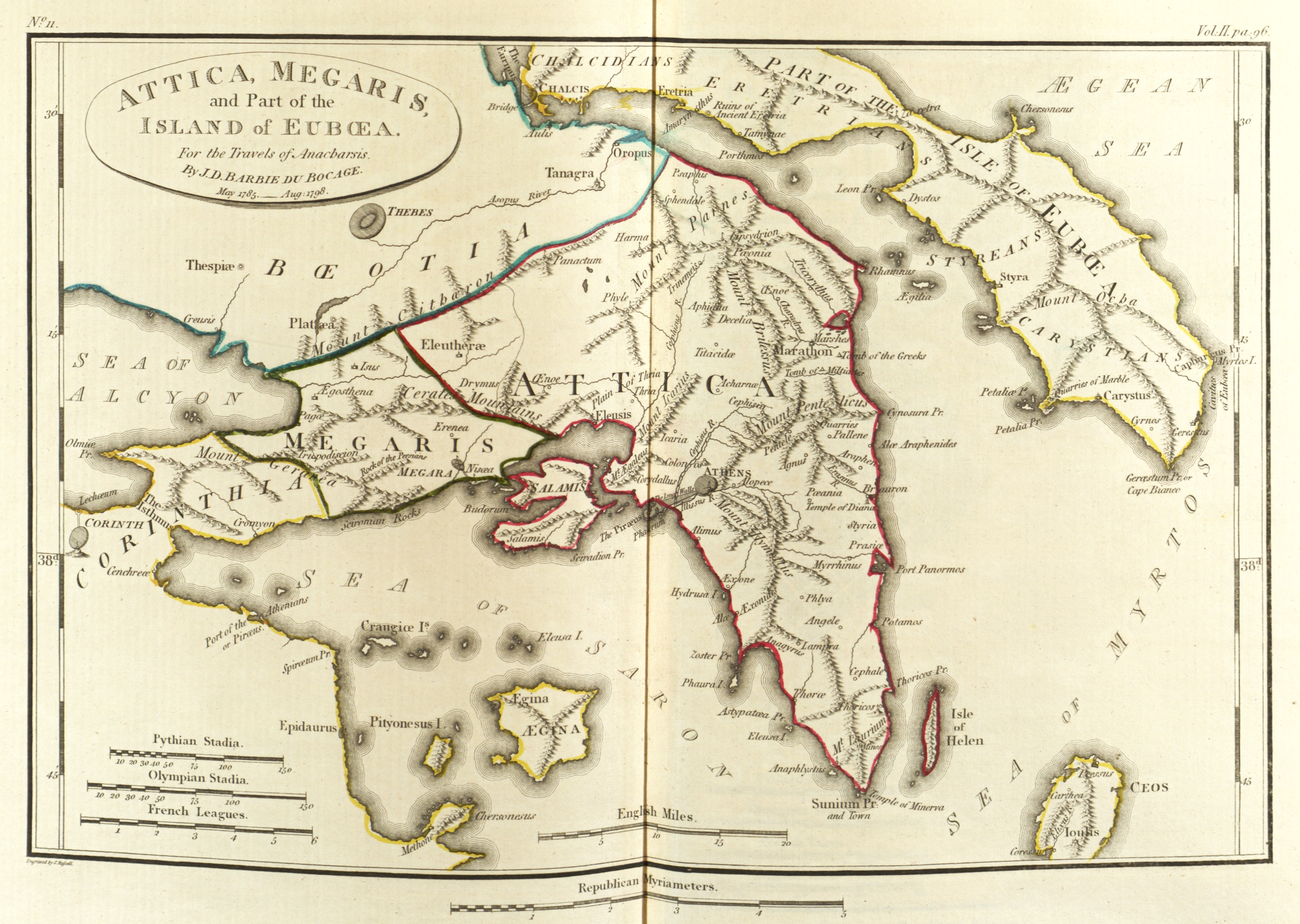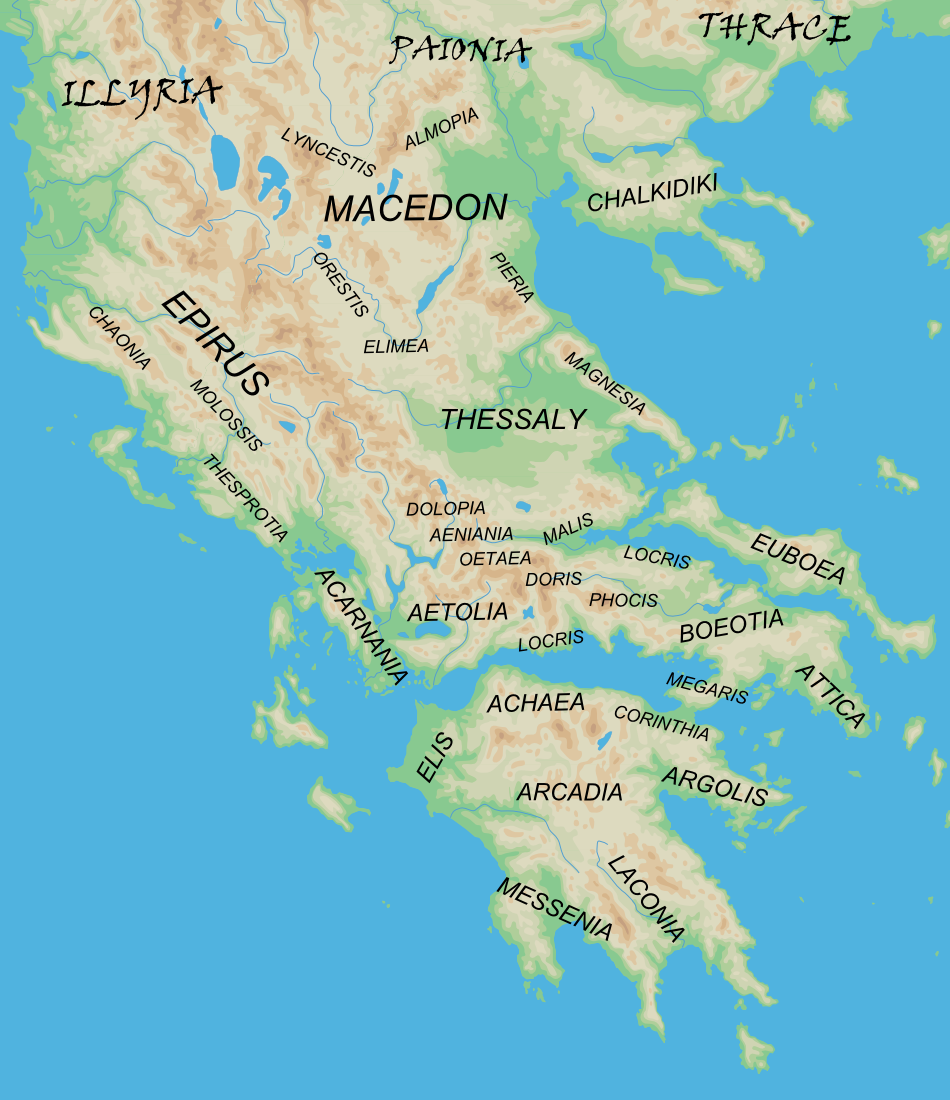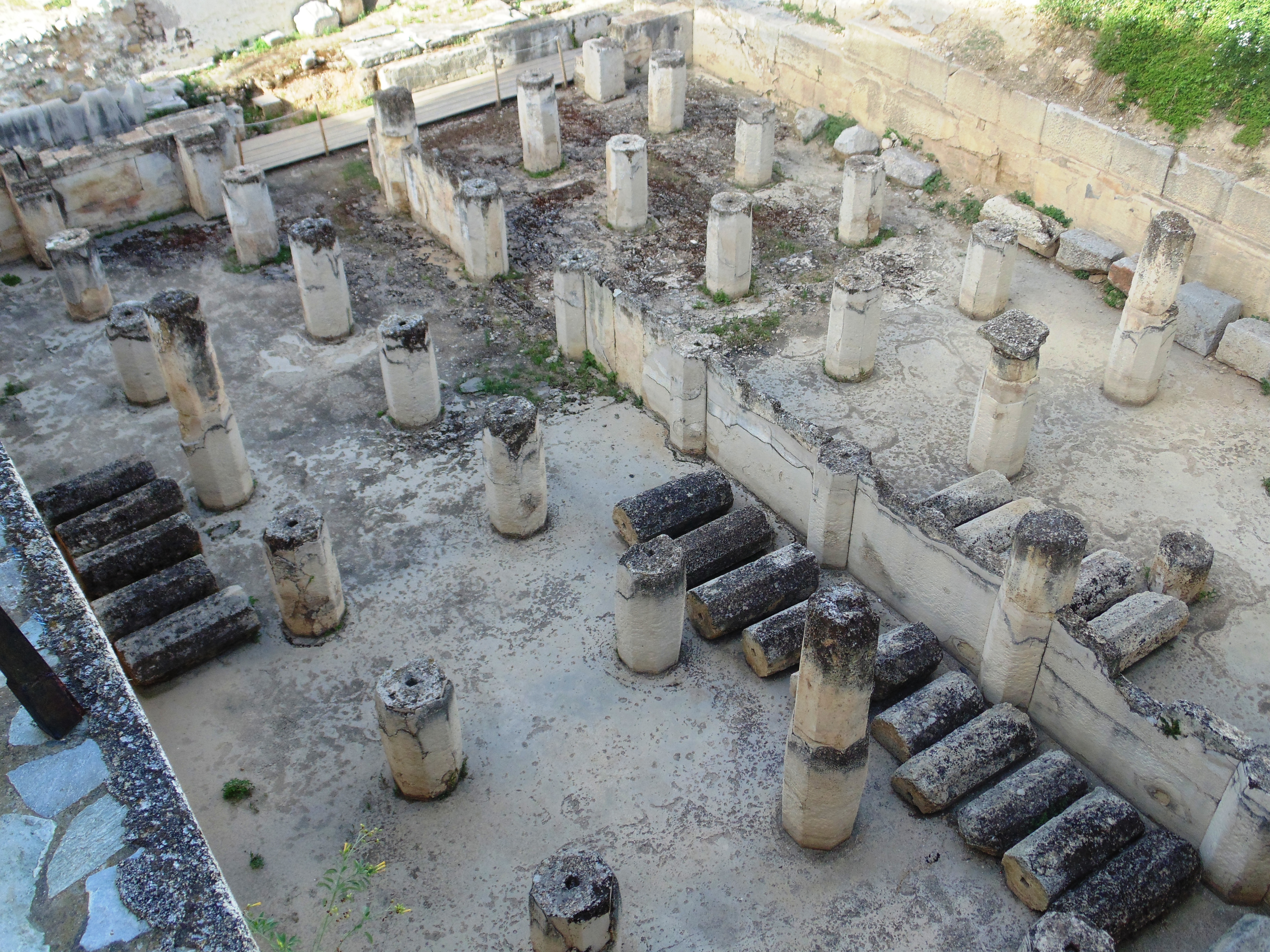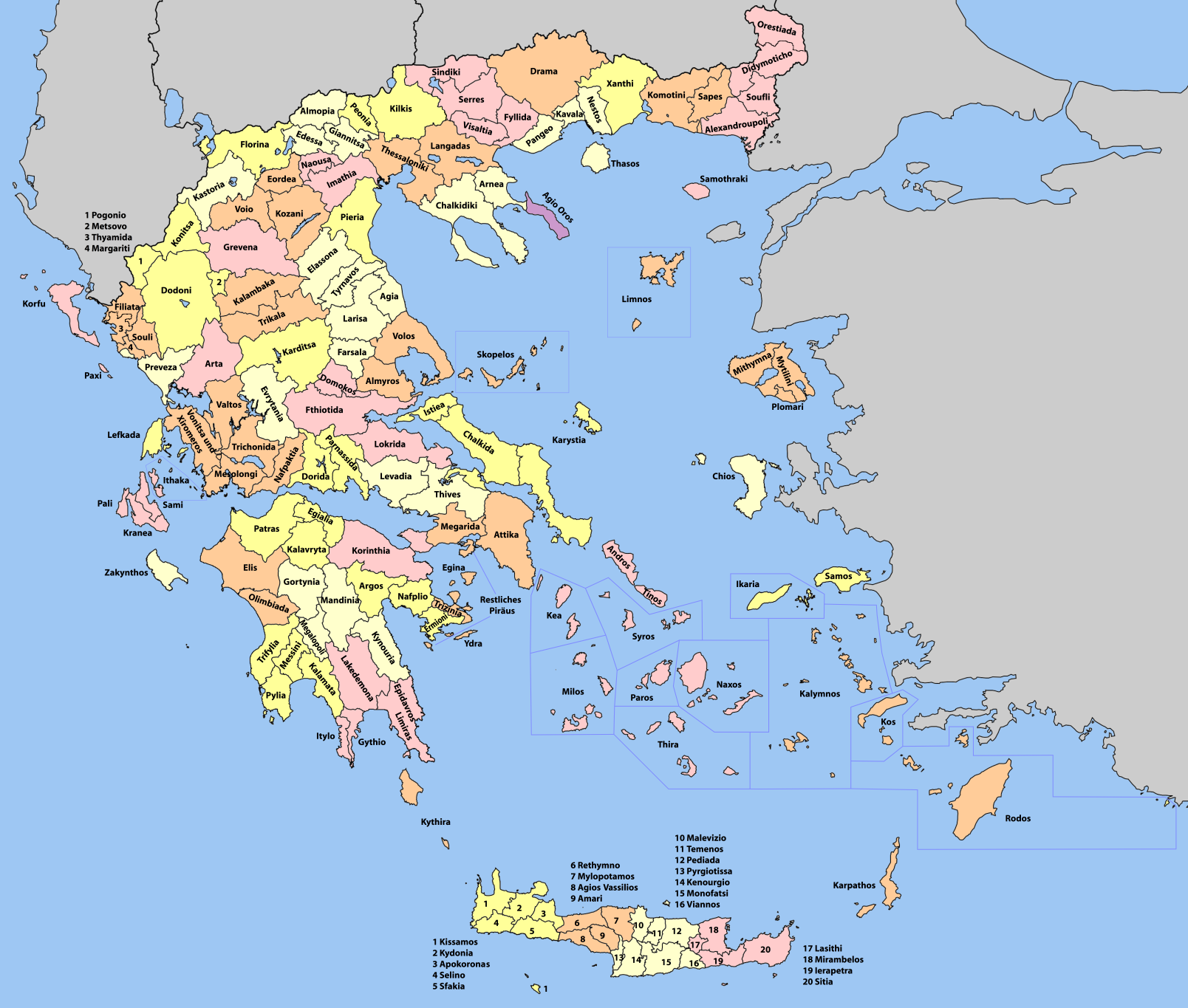|
Megaris
:''This is also the ancient Greek name of Megaris (Naples), a small island off Naples, site of the Castel dell'Ovo.'' Megaris () was a small but populous Sovereign state, state of ancient Greece, west of Attica and north of Corinthia, whose inhabitants were adventurous seafarers, credited with deceitful propensities. The capital, Megara, was famous for white marble and fine clay. Mount Geraneia dominated the center of the region. The island of Salamis Island, Salamis was originally under the control of Megara, before it was lost to Classical Athens, Athens in the late 7th century BCE. Province The province of Megaris or Megarida ( or ) was one of the provinces of Greece, provinces of the East Attica Prefecture. Its territory corresponded with that of the current municipalities Aspropyrgos, Eleusis, Mandra-Eidyllia and Megara. It was abolished in 2006. References Sources * Ancient Megara, Ancient Greek geography Provinces of Greece Historical regions Historica ... [...More Info...] [...Related Items...] OR: [Wikipedia] [Google] [Baidu] |
Regions Of Ancient Greece
The regions of ancient Greece were sub-divisions of the Hellenic world as conceived by the ancient Greeks, shown by their presence in the works of ancient historians and geographers or in surviving legends and myths. Conceptually, there is no clear theme to the structure of these regions. Some, particularly in the Peloponnese, can be seen primarily as distinct geo-physical units, defined by physical boundaries such as mountain ranges and rivers. Conversely, the division of central Greece between Boeotia, Phocis, Doris and the three parts of Locris, seems to be attributable to ancient tribal divisions and not major geographical features. Both types of regions retained their identity throughout the Greek Dark Ages and its tumultuous changes in the local population and culture, giving them a less political and more symbolic presence. Other geographical divisions not identified with the aforementioned areas did, however, change over time, suggesting a closer connection with triba ... [...More Info...] [...Related Items...] OR: [Wikipedia] [Google] [Baidu] |
Attica
Attica (, ''Attikḗ'' (Ancient Greek) or , or ), or the Attic Peninsula, is a historical region that encompasses the entire Athens metropolitan area, which consists of the city of Athens, the capital city, capital of Greece and the core city of the metropolitan area, as well as its surrounding suburban cities and towns. It is a peninsula projecting into the Aegean Sea, bordering on Boeotia to the north and Megaris to the west. The southern tip of the peninsula, known as Laurion, Lavrio, was an important Mines of Laurion, mining region. The history of Attica is closely linked with that of Athens. In ancient times, Attica corresponded with the Athens city-state. It was the most prominent region in Ancient Greece, specifically during the Golden Age of Athens in the Classical Greece, classical period. Classical Athens, Ancient Attica (the classical Classical Athens, Athens city-state) was divided into deme, demoi, or municipalities, from the reform of Cleisthenes in 508/7 BC, gr ... [...More Info...] [...Related Items...] OR: [Wikipedia] [Google] [Baidu] |
Megara
Megara (; , ) is a historic town and a municipality in West Attica, Greece. It lies in the northern section of the Isthmus of Corinth opposite the island of Salamis Island, Salamis, which belonged to Megara in archaic times, before being taken by Athens. Megara was one of the four districts of Attica, embodied in the four mythic sons of King Pandion II, of whom Nisos was the ruler of Megara. Megara was also a trade port, its people using their ships and wealth as a way to gain leverage on armies of neighboring poleis. Megara specialized in the exportation of wool and other animal products including livestock such as horses. It possessed two harbors, Pagae to the west on the Corinthian Gulf, and Nisaea to the east on the Saronic Gulf of the Aegean Sea. History Late Bronze Mycenaean period In the Late Bronze Age, Megara features prominently as a small kingdom in the myths and legends of Homer. Megara emerged between two fortified ports, Nisaea on the Saronic Gulf and Pagae on the ... [...More Info...] [...Related Items...] OR: [Wikipedia] [Google] [Baidu] |
Provinces Of Greece
The provinces of Greece (, "eparchy") were sub-divisions of some the country's prefectures of Greece, prefectures. From 1887, the provinces were abolished as actual administrative units, but were retained for some state services, especially financial and educational services, as well as for electoral purposes. Before the Second World War, there were 139 provinces, and after the war, with the addition of the Dodecanese, Dodecanese Islands, their number grew to 148. According to the Article 7 of the Code of Prefectural Self-Government (Presidential Decree 30/1996), the provinces constituted a "particular administrative district" within the wider "administrative district" of the prefectures. The provinces were finally abolished after the 2006 Greek local elections, 2006 local elections, in line with Law 2539/1997, as part of the wide-ranging administrative reform known as the "Kapodistrias reform, Kapodistrias Project", and replaced by enlarged Municipalities and communities of G ... [...More Info...] [...Related Items...] OR: [Wikipedia] [Google] [Baidu] |
Ancient Greece
Ancient Greece () was a northeastern Mediterranean civilization, existing from the Greek Dark Ages of the 12th–9th centuries BC to the end of classical antiquity (), that comprised a loose collection of culturally and linguistically related city-states and communities. Prior to the Roman period, most of these regions were officially unified only once under the Kingdom of Macedon from 338 to 323 BC. In Western history, the era of classical antiquity was immediately followed by the Early Middle Ages and the Byzantine period. Three centuries after the decline of Mycenaean Greece during the Bronze Age collapse, Greek urban poleis began to form in the 8th century BC, ushering in the Archaic period and the colonization of the Mediterranean Basin. This was followed by the age of Classical Greece, from the Greco-Persian Wars to the death of Alexander the Great in 323 BC, and which included the Golden Age of Athens and the Peloponnesian War. The u ... [...More Info...] [...Related Items...] OR: [Wikipedia] [Google] [Baidu] |
Provinces Of Greece
The provinces of Greece (, "eparchy") were sub-divisions of some the country's prefectures of Greece, prefectures. From 1887, the provinces were abolished as actual administrative units, but were retained for some state services, especially financial and educational services, as well as for electoral purposes. Before the Second World War, there were 139 provinces, and after the war, with the addition of the Dodecanese, Dodecanese Islands, their number grew to 148. According to the Article 7 of the Code of Prefectural Self-Government (Presidential Decree 30/1996), the provinces constituted a "particular administrative district" within the wider "administrative district" of the prefectures. The provinces were finally abolished after the 2006 Greek local elections, 2006 local elections, in line with Law 2539/1997, as part of the wide-ranging administrative reform known as the "Kapodistrias reform, Kapodistrias Project", and replaced by enlarged Municipalities and communities of G ... [...More Info...] [...Related Items...] OR: [Wikipedia] [Google] [Baidu] |
Ancient Greece
Ancient Greece () was a northeastern Mediterranean civilization, existing from the Greek Dark Ages of the 12th–9th centuries BC to the end of classical antiquity (), that comprised a loose collection of culturally and linguistically related city-states and communities. Prior to the Roman period, most of these regions were officially unified only once under the Kingdom of Macedon from 338 to 323 BC. In Western history, the era of classical antiquity was immediately followed by the Early Middle Ages and the Byzantine period. Three centuries after the decline of Mycenaean Greece during the Bronze Age collapse, Greek urban poleis began to form in the 8th century BC, ushering in the Archaic period and the colonization of the Mediterranean Basin. This was followed by the age of Classical Greece, from the Greco-Persian Wars to the death of Alexander the Great in 323 BC, and which included the Golden Age of Athens and the Peloponnesian War. The u ... [...More Info...] [...Related Items...] OR: [Wikipedia] [Google] [Baidu] |
Ancient Greek Geography
;Pre-Hellenistic Classical Greece *Homer *Anaximander (died ) *Hecataeus of Miletus (died ) *Massaliote Periplus (6th century BC) *Scylax of Caryanda (6th century BC) *Herodotus (died ) ;Hellenistic period *Pytheas (died ) *''Periplus of Pseudo-Scylax'' (3rd or 4th century BC) *Megasthenes (died ) *Autolycus of Pitane (died ) *Dicaearchus (died ) *Deimakos (3rd century BC) *Timosthenes (floruit, fl. 270s BC) *Eratosthenes (c. 276–194 BC) *Scymnus (floruit, fl. 180s BC) *Hipparchus (c. 190–120 BC) *Agatharchides (2nd century BC) *Posidonius (c. 135–51 BC) *Pseudo-Scymnus (c. 90 BC) *Diodorus Siculus (c. 90–30 BC) *Alexander Polyhistor (1st century BC) ;Roman Empire period *''Periplus of the Erythraean Sea'' *Strabo (63 BC – AD 24) *Pomponius Mela (fl. 40s AD) *Isidore of Charax (1st century AD) *Mucianus (1st century AD) *Pliny the Elder (AD 23 – 79), ''Natural History (Pliny), Natural History'' *Marinus of Tyre (AD 70 – 130)Hubert Cancik and Helmuth Schneider (ed. ... [...More Info...] [...Related Items...] OR: [Wikipedia] [Google] [Baidu] |
Mandra-Eidyllia
Mandra-Eidyllia () is a municipality in the West Attica regional unit, Attica, Greece. The seat of the municipality is the town Mandra. The municipality has an area of 426.197 km2. Municipality The municipality Mandra–Eidyllia was formed at the 2011 local government reform by the merger of the following 4 former municipalities, that became municipal units: *Erythres *Mandra *Oinoi *Vilia Vilia (; formerly Eidyllia, Ειδυλλία) is a village and a former municipality of West Attica, Greece. Since the 2011 local government reform it is part of the municipality Mandra-Eidyllia, of which it is a municipal unit. Its population w ... References External links * Municipalities of Attica Populated places in West Attica {{Attica-geo-stub ... [...More Info...] [...Related Items...] OR: [Wikipedia] [Google] [Baidu] |
Eleusis
Elefsina () or Eleusis ( ; ) is a suburban city and Communities and Municipalities of Greece, municipality in Athens metropolitan area. It belongs to West Attica regional unit of Greece. It is located in the Thriasio Plain, at the northernmost end of the Saronic Gulf. North of Elefsina are Mandra, Greece, Mandra and Magoula, Attica, Magoula, while Aspropyrgos is to the northeast. It is the site of the Eleusinian Mysteries and the birthplace of Aeschylus. Today, Elefsina is a major industrial centre, with the largest oil refinery in Greece as well as the home of the Aeschylia Festival, the longest-lived arts event in the Attica Region. On 11 November 2016, Elefsina was named the European Capital of Culture for 2021, which became effective in 2023 due to the COVID-19 pandemic postponement. Etymology The word ''Eleusis'' first appears in the ''Orphic Hymn to Eleusinian Demeter'': «Δήμητρος Ελευσινίας, θυμίαμα στύρακα». Also Hesychius of Alexand ... [...More Info...] [...Related Items...] OR: [Wikipedia] [Google] [Baidu] |





